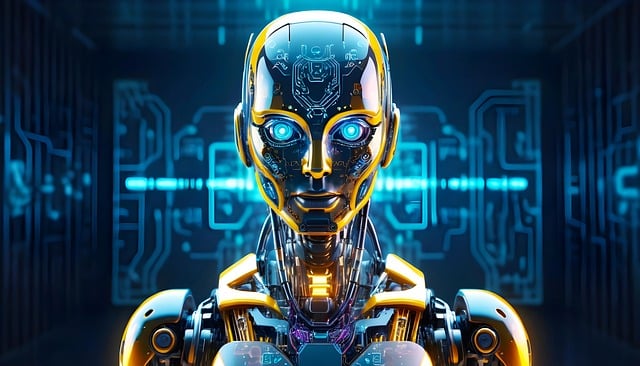So, what exactly is Artificial Intelligence (AI)? AI core concepts involve machines, particularly computer systems, simulating human intelligence processes. These processes encompass learning (gaining information and rules for using it), reasoning (applying rules to reach conclusions), and self-correction.
AI’s journey began in the mid-20th century but has seen exponential growth and development in recent years. From early conceptual theories and basic computational models, AI has evolved into sophisticated systems that perform complex tasks across various domains.
Importance of AI Core Concepts in Today’s World

AI is more than a buzzword; it’s transforming industries and shaping the future. Picture healthcare without AI-driven diagnostics or finance without AI-enhanced fraud detection. These technologies streamline processes, enhance accuracy, and inspire hope for a more efficient and innovative future.
AI is more present in your everyday life than you might realize. It’s behind the recommendations on your favorite streaming service, the smart assistant you talk to, and even the algorithms that filter spam from your inbox. AI is an integral part of the digital fabric that simplifies and enriches our lives, making us more connected and aware of its impact.
Empower Yourself with AI Knowledge
- Machine Learning (ML): This subset of AI core concepts involves computers learning from data without explicit programming.
- Neural Networks: These computer systems mimic the human brain’s network of neurons, recognizing patterns and interpreting data to emulate human cognition.
- Deep Learning: This specialized form of ML employs neural networks with numerous layers (hence “deep”) to analyze various data factors.
Understanding artificial intelligence terms is crucial because they highlight the layers and complexities within AI. Machine learning, neural networks, and deep learning uniquely affect how AI functions and evolves.
Core Components of AI
Machine Learning
Machine learning is the heart of AI. The technique allows AI systems to learn from data and improve over time. Think of it as teaching a computer how to perform a task by feeding it large amounts of data and letting it learn from patterns and correlations.
There are three principal kinds of machine learning:
- Supervised Learning: Here, you train the system using a labeled dataset, meaning the data includes input-output pairs. For example, teaching a machine to recognize cats by showing it thousands of labeled cat images, where each image is ‘labeled’ with the information that it contains a cat.
- Unsupervised Learning: In this approach, you give the system data without explicit instructions on how to use it. The system identifies patterns and relationships within the data. A typical example is clustering algorithms, which group similar data points together.
- Reinforcement Learning: This method involves training a system through trial and error. The system learns to make decisions by receiving rewards or penalties based on its actions, much like training a pet.
Recommendation engines in e-commerce run on machine learning, recommending products based on your browsing record and buying habits.
Neural Networks
Neural networks are the foundation of deep learning. They feature interconnected nodes, or neurons, that process data in layers. The design draws inspiration from the human brain, where each neuron sends data to multiple other neurons, forming a complex network of interactions.
A neural network typically consists of:
- Input Layer: Receives the initial data.
- Hidden Layers: Perform computations and extract features from the data. Depending on the complexity of the task, these layers can range from one to hundreds.
- Output Layer: Delivers the absolute projection or category.
Neural networks are powerful tools for image and speech recognition. For example, they enable smartphones to recognize voice commands or social media platforms to tag friends in photos automatically.
Deep Learning
Deep learning takes neural networks to the next level. Its standards use multiple layers of neurons to handle vast amounts of data and detect complex patterns that simpler models might overlook.
There are several architectures in deep learning, each suited for different tasks:
- Convolutional Neural Networks (CNNs): Ideal for image processing, CNNs can detect features like edges, textures, and objects within images.
- Recurrent Neural Networks (RNNs): You use these for sequential data, such as time series or natural language processing. RNNs retain information from previous inputs in their memory cells, making them suitable for tasks like language translation.
- Generative Adversarial Networks (GANs): GANs consist of two networks—the generator and the discriminator—that compete against each other. This competition helps the generator create highly realistic data, such as deepfake images or artwork.
Deep learning has revolutionized fields like autonomous driving, where vehicles use deep learning to interpret and react to their surroundings in real-time.
Practical Applications and Future of AI Core Concepts
AI in Different Industries

AI’s transformative power spans numerous industries, enhancing efficiency, accuracy, and innovation. It’s a tool and a catalyst for change, inspiring hope for a more efficient and innovative future.
- Healthcare: AI is transforming healthcare through predictive analytics, personalized medicine, and robotic surgeries. For example, IBM’s Watson for Oncology uses AI to provide oncologists with treatment options based on the latest medical literature and patient data.
- Finance: In finance, AI algorithms detect fraudulent transactions by analyzing patterns and anomalies in data. AI-driven robo-advisors also provide personalized investment advice, making financial planning more accessible.
- Transportation: Autonomous vehicles represent the cutting edge of AI in transportation. Companies like Tesla and Waymo are leveraging AI to create self-driving cars capable of navigating roads, avoiding obstacles, and reducing accidents.
Ethical Considerations
With great power comes great responsibility. The rise of AI brings ethical challenges that need careful consideration.
- Bias and Fairness: AI systems can unintentionally continue biases present in their training data. For example, facial recognition systems have faced criticism for having higher error rates when identifying people of color. Ensuring fairness in AI involves using diverse data sets, such as images of people from different ethnicities, and consistently monitoring for biases.
- Privacy Concerns: AI depends on vast amounts of data, which raises concerns about data collection, storage, and usage. AI developers and policymakers face the crucial challenge of balancing innovation with privacy rights.
- Regulation and Oversight: The rapid pace of AI development calls for robust rules to prevent misuse and ensure accountability. Debates continue over how best to regulate AI without stifling innovation.
Future Trends in AI Core Concepts
Several trends and innovations will shape the future of AI:
- Emerging Technologies: Quantum computing, edge AI, and explainable AI (XAI) are emerging technologies that promise to enhance AI’s capabilities. Quantum computing could exponentially speed up data processing. At the same time, edge AI allows real-time data analysis on devices rather than centralized servers, bringing AI’s power closer to the data source.
- Impact on the Job Market: AI core concepts will create new jobs and displace existing ones. Automation might replace routine tasks and open opportunities in AI development, data analysis, and other tech-related fields. Adapting to these changes will require upskilling and reskilling the workforce.
- Predictions for AI Development: Experts predict that AI will continue to advance rapidly, becoming more integrated into various aspects of life. For example, innovations in natural language processing could lead to even more sophisticated virtual assistants and chatbots.
AI core concepts are more than a technological advancement; they are a transformative force reshaping the world. By understanding its core concepts and practical applications, you can appreciate AI’s profound impact, which will continue to have on our lives. Whether you’re a tech enthusiast, a professional, or just curious about the future, AI offers endless possibilities and challenges worth exploring.

